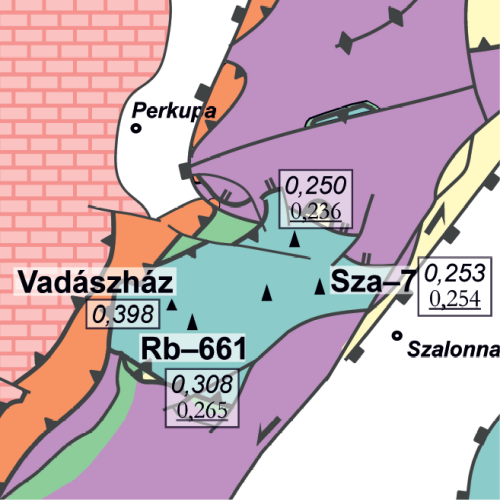Peak metamorphic temperature determination with Raman spectroscopy of carbonaceous materials: standardization and case study from the Aggtelek–Rudabánya Hills
Abstract
Peak metamorphic temperature estimates by illite (Kübler index), chlorite “crystallinity” and vitrinite reflectance exhibit a large uncertainty in case of deep diagenetic to low-grade metamorphic rocks. During the last decade, Raman spectroscopy of carbonaceous materials (RSCM) has become a widespread method for obtaining more precise temperatures. The aim of this study is to introduce the theoretical background and applicability of one of the promising RSCM methods in Hungarian literature. The presented method is based on a calibration curve of a reference series, which provides an estimation of peak metamorphic temperatures of unknown samples. The application of this reference series allows to compare the temperature results with data from other laboratories using the same reference series. In this work, we present the results of the reference series measured at the ELTE TTK KKIC Raman laboratory and the computed calibration curve. The applicability of the method is presented by the example of the Telekesoldal Formation, Aggtelek–Rudabánya Hills. The estimated peak metamorphic temperature of the complex is 273 ± 10 °C, which considerably refines the estimations of previous methods e.g. illite (Kübler index), chlorite “crystallinity” and vitrinite reflectance values. The presented method can either expand, or partially replace the vitrinite reflectance measurements both in hydro carbon and coal exploration and research.
















